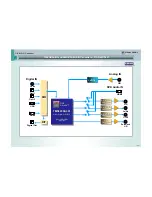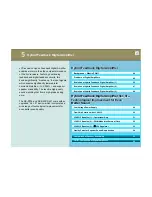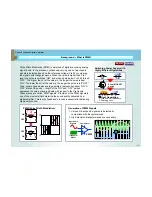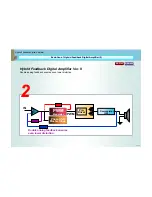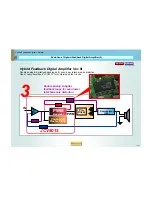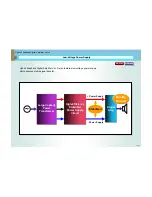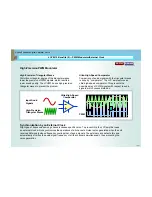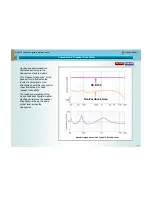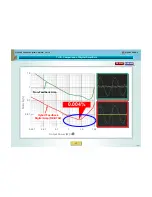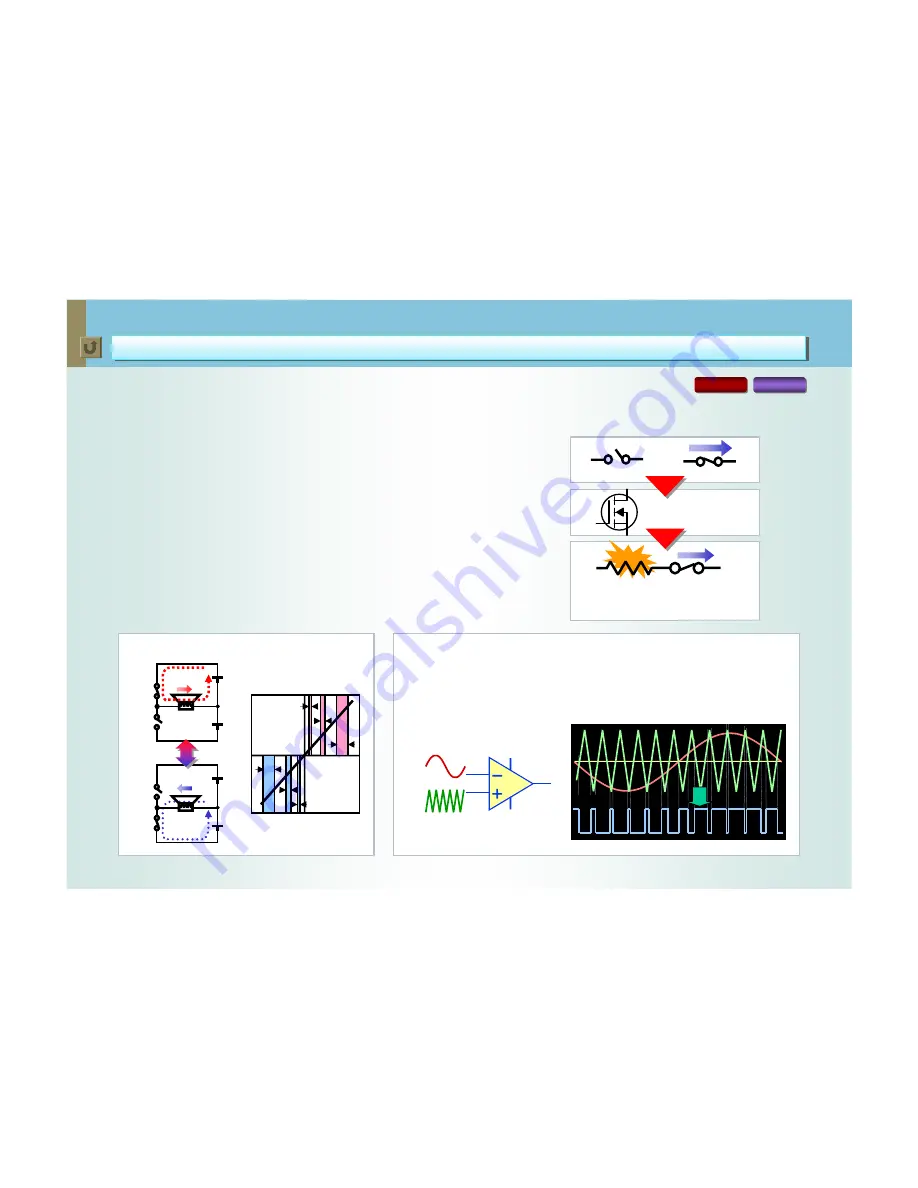
< 44 >
JVC technologies for satisfying the THX Ultra2 certification
Hybrid Feedback Digital Amplifier
Hybrid Feedback Digital Amplifier
Background -- What is PWM?
Background -- What is PWM?
ON
+1
-1
0
+1
OFF
-1
ON
OFF
PWM (Pulse Width Modulation)
RX-D702
RX-D402
Pulse Width Modulation (PWM) is a method of digitally encoding analog
signal levels. In the process, continuously varying value of input audio
signals is detected based on the reference voltage (Vref) by comparing
the signals with triangular waves. When the value is higher than Vref
level, the pulse is switched “ON”, and when it gets below Vref, it’s turned
“OFF”. The higher than Vref the value is, the longer the pulse is kept
“ON”. The lower than Vref the value is, the longer the pulse is left “OFF”.
Thus, square-shaped waves are generated, representing either “ON” or
“OFF” state of the pulse -- length of the “ON” and “OFF” pulses
expresses the value of audio signals with respect to the Vref levels.
These waves are called “PWM signals”. Precision of the PWM signals is
one of the elements that determine the sound quality delivered by a
digital amplifier. This is why “feedback” process is essential for delivering
high-quality sound.
Switching Power Supply with
Highly-Efficient Operations
OFF
ON
Power MOS FET
Switch
●
Heat Generation
1. Loss from ON Impedance
2. Switching Loss
PWM
Generation of PWM Signals
1. Values of input audio signals are detected by
comparison with triangular waves.
2. High-precision triangular waves are necessary.
Comparator
Input Audio
Signals
Triangular
Waves
*Also applies to RX-D401
Summary of Contents for RX-D702
Page 1: ... 1 ...
Page 63: ... 63 ...

